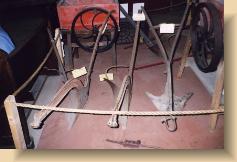In his journals, when Harvey mentions that they "used the machine" to do a certain chore, he may have
referred to tools similar to these, although we don't know which ones the family owned.
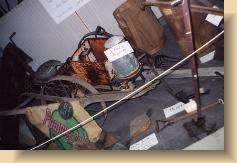 Potato Planters |
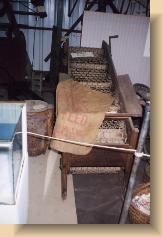 Potato Grader |
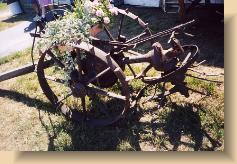 Potato Digger |
Center photo shows a grader, which sorted the crop by size, and above right is a digger. It would dig deep
into the ground to loosen the potatoes, and bring them to the surface. Note the iron wheels - no flat tires!
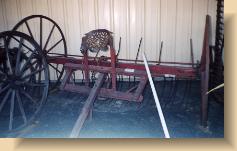 Hay Rake |
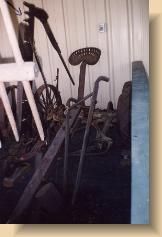 Mower |
 Thresher |
The cutter bar attached to the side of the machine was lowered onto the ground
and the motion of the turning wheels caused the blades to go back and forth,
cutting the hay. Once the hay was cut and dry, a hay rake was used to make windrows.
The teeth on the bottom scooped it into a big bunch, then a trip lever lifted the teeth,
dumping a long row of dried hay. It was then gathered up by hand and pitched onto the wagon.
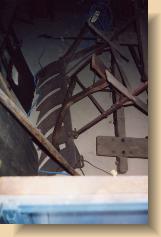 Ice Cutter Sled |
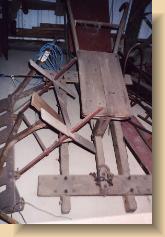 Scoring Blade |
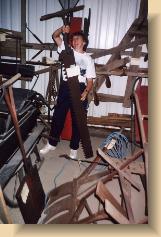 Ice-Cutting Saw |
was thick on the lakes, they got in their year's supply of ice. Harvey often wrote about cutting
ice on Mud lake. Ice was used to keep food from spoiling, and to keep the milk house cold.
Above left is the sled on which the driver sat while the horse pulled it across the frozen lake.
At the same time, the implement shown above center marked and scored the ice, so the cakes would
be uniform in size. Once they had marked out squares of ice, a hole was bored into the ice so that
a saw, above right, could be inserted. It was capable of cutting through 4 feet of solid ice.
After a cake of ice was cut, it was removed from the water with large ice tongs and carried to the
ice house, where a thick cover of sawdust kept it from thawing, even on the hottest days.
Thanks to Ruby Komarony for all the photos and information
if you would like to add to this page of the Williamson Family website.
Return to the main Williamson Family Page
Revised November 1, 2003

